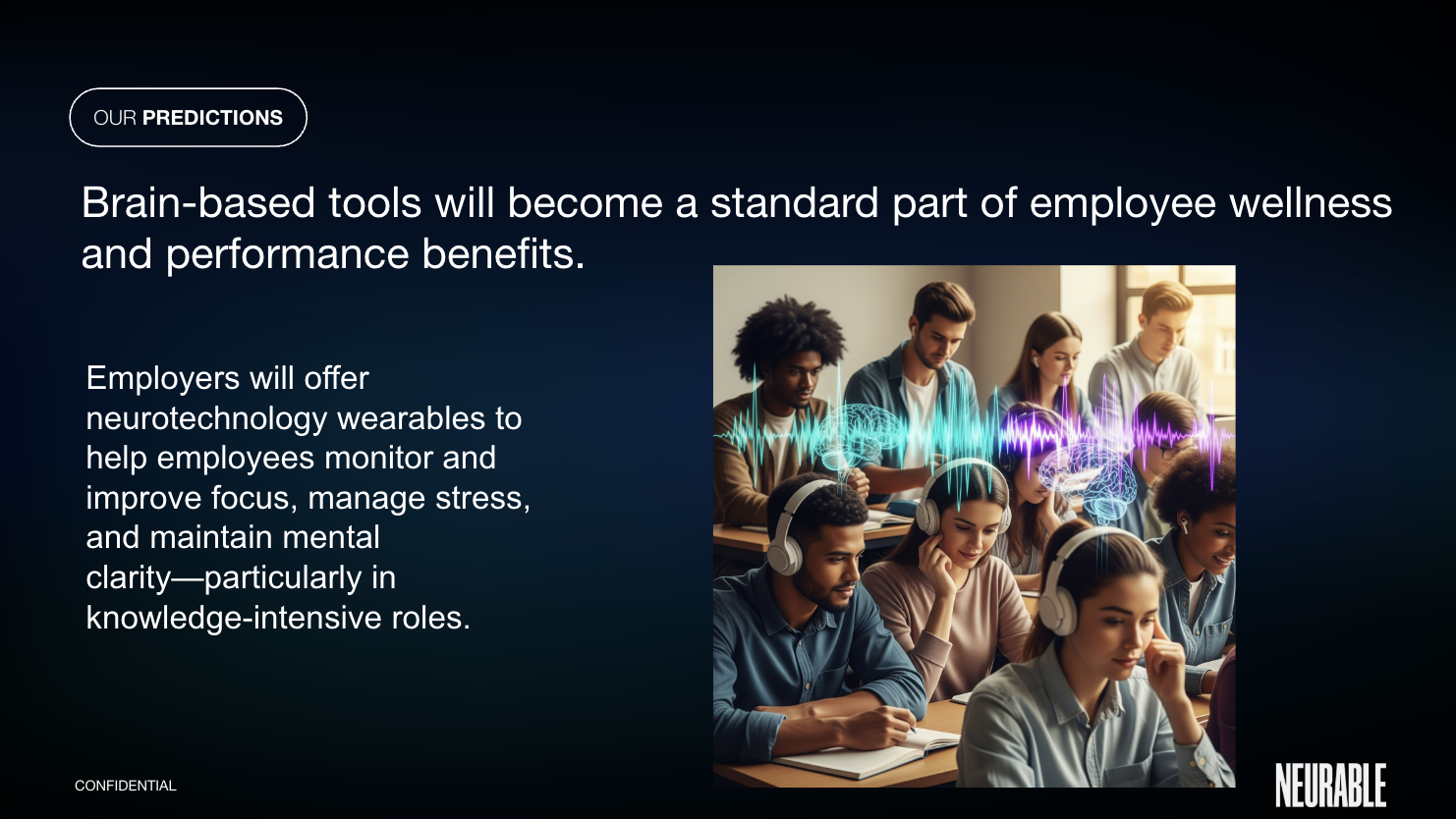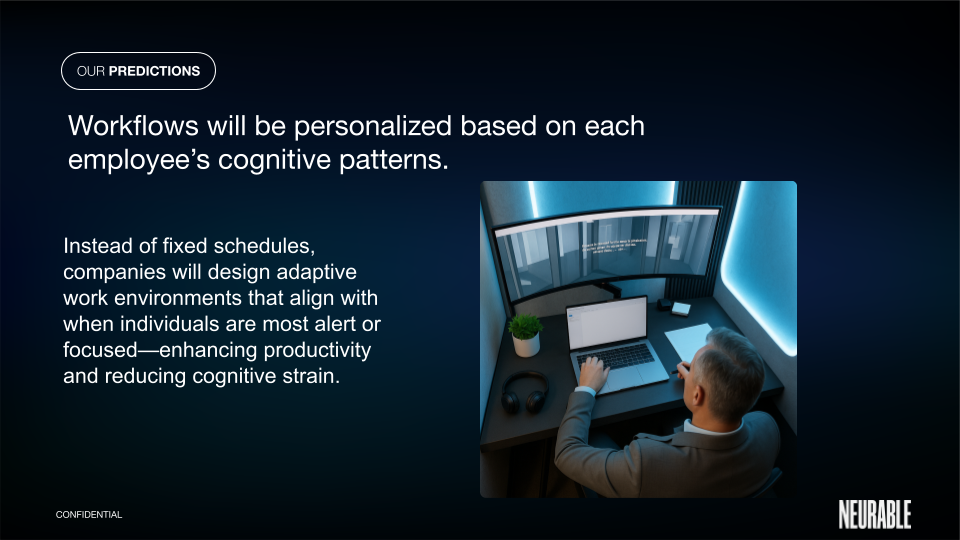- Remove the current class from the content27_link item as Webflows native current state will automatically be applied.
- To add interactions which automatically expand and collapse sections in the table of contents select the content27_h-trigger element, add an element trigger and select Mouse click (tap)
- For the 1st click select the custom animation Content 27 table of contents [Expand] and for the 2nd click select the custom animation Content 27 table of contents [Collapse].
- In the Trigger Settings, deselect all checkboxes other than Desktop and above. This disables the interaction on tablet and below to prevent bugs when scrolling.
How Neurable Is Making Cognitive State the Next Business KPI
At Neurable, we believe the future of work will be shaped not just by what people do—but by how they think and feel while doing it.
After more than a decade of research and development, our brain-computer interface (BCI) technology is no longer a moonshot. It’s a practical solution that’s redefining workforce performance, mental well-being, and employee retention.
During a recent executive roundtable with over 45 HR and people leaders, our CEO, Ramses Alcaide, made a simple but powerful prediction:
“Cognitive data will soon be as critical as sales data or engagement scores.”

Our Predictions: The Future of Work with Neurotechnology
1. Mental state will become a core metric for team performance.
Just like businesses track KPIs around revenue or productivity, they’ll soon measure stress, focus, and fatigue in real time. Neurable makes that possible—by translating brain activity into actionable insights.
2. Cognitive insights will drive personalized workdays.
The 9-to-5 will give way to brain-based work rhythms. With Neurable, employees will know their peak focus hours and get smart break prompts that can improve productivity by up to 12% per hour.
3. Burnout will be predicted—and prevented.
Leaders will no longer have to rely on exit interviews or pulse surveys to find out something was wrong. With Neurable, early signs of disengagement or fatigue are detected before they lead to turnover.
4. Brain health will become a cornerstone of corporate wellness.
We predict brain health will become as prioritized as physical health in benefits programs. Organizations that invest in cognitive well-being will see higher retention, innovation, and employee loyalty.
5. Every employee will have access to brain-based feedback.
Just like wearables transformed fitness, Neurable will give individuals the tools to understand and manage their mental energy—empowering self-regulation and sustainable performance.

From Theoretical to Transformational
Neurable’s EEG-powered wearable brings science fiction into the boardroom. Our technology is already being piloted in sectors like defense, healthcare, elite sports, and advanced R&D—by teams that view cognitive performance as mission-critical.
“This is clearly the future… I’m excited about the day, soon, when the average employee has access to this technology.”
That day is arriving faster than you think.
Lead the Shift with Neurable
Neurable is partnering with leading employers who are transforming the way they are reducing burnout, driving productivity, focus and brain health. Learn more about piloting Neurable with your team here: https://www.neurable.com/partner/neurable-for-teams
2 Distraction Stroop Tasks experiment: The Stroop Effect (also known as cognitive interference) is a psychological phenomenon describing the difficulty people have naming a color when it's used to spell the name of a different color. During each trial of this experiment, we flashed the words “Red” or “Yellow” on a screen. Participants were asked to respond to the color of the words and ignore their meaning by pressing four keys on the keyboard –– “D”, “F”, “J”, and “K,” -- which were mapped to “Red,” “Green,” “Blue,” and “Yellow” colors, respectively. Trials in the Stroop task were categorized into congruent, when the text content matched the text color (e.g. Red), and incongruent, when the text content did not match the text color (e.g., Red). The incongruent case was counter-intuitive and more difficult. We expected to see lower accuracy, higher response times, and a drop in Alpha band power in incongruent trials. To mimic the chaotic distraction environment of in-person office life, we added an additional layer of complexity by floating the words on different visual backgrounds (a calm river, a roller coaster, a calm beach, and a busy marketplace). Both the behavioral and neural data we collected showed consistently different results in incongruent tasks, such as longer reaction times and lower Alpha waves, particularly when the words appeared on top of the marketplace background, the most distracting scene.
Interruption by Notification: It’s widely known that push notifications decrease focus level. In our three Interruption by Notification experiments, participants performed the Stroop Tasks, above, with and without push notifications, which consisted of a sound played at random time followed by a prompt to complete an activity. Our behavioral analysis and focus metrics showed that, on average, participants presented slower reaction times and were less accurate during blocks of time with distractions compared to those without them.




.webp)